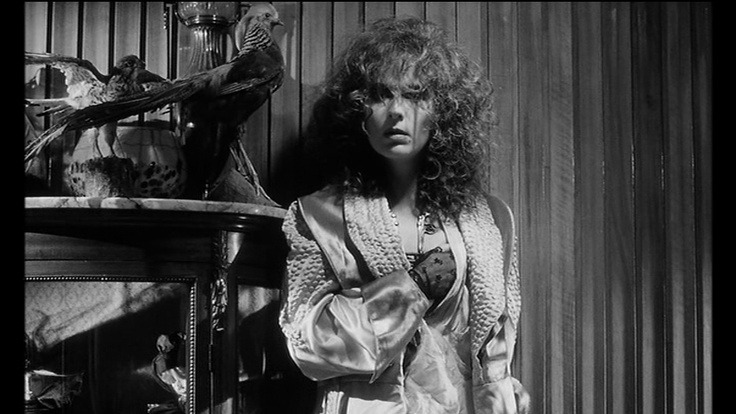
Going to Extremes

This column is a reprint from Unwinnable Monthly #174. If you like what you see, grab the magazine for less than ten dollars, or subscribe and get all future magazines for half price.
———
Now this.
———
The first article I ever wrote for Unwinnable focused on the influence of Stalker on Jeff Vandermeer’s Annihilation, or perhaps lack thereof. While I thought there had to be a connection between the works, Vandermeer denied it, calling me an “arrogant ass” on Twitter. I hope I don’t make a similar mistake this month because I’m starting to connect another couple of projects with red string, and I’m not sure what their creators would think – this time I’m drawing lines between Yorgos Lanthimos’s surprisingly popular Poor Things, and the much less successful but never-the-less cult favorite, Singapore Sling from the twisted mind (insert rad guitar solo) of Nikos Nikolaidis. Did the latter influence the former? Let’s dig in.
For those who have not yet seen Poor Things, briefly, it is the tale of Bella (Emma Stone) who, after having her brain replaced by that of her unborn fetus by a mad scientist, known to her as God (Willem Dafoe), goes on picaresque journey of self-discovery. As our young heroine discovers her sexuality and independence, she also learns the truth of her condition, and comes home a changed woman. While this may seem complicated, it doesn’t hold a candle to whatever the hell the plot of Singapore Sling is. I will try to keep this as short as possible: a mother and daughter live in the memory of their sexually abusive husband/father, engaging in all types of depraved, incestuous sexual taboos and occasionally murdering and burying various servants. A private detective stumbles across their doorstep in search of the missing Laura, only to be kidnapped and forced to become part of their sexual BDSM games. When the daughter gets fed up with her mother’s domineering ways, she murders her with the PI (now known as Singapore Sling after the drink), who then takes over the maternal role, only to then stab the daughter during one of their BDSM sessions, who in turn, shoots him. All three die. I’m not sure that actually covers the insanity that is Singapore Sling, but you’d have to watch it yourself to find out. I would recommend it, but only if you have the appetite for one of the wildest movies I’ve seen, and that includes Nekromantik.

I hope to show that while the plots don’t share too many similarities, having watched both movies within a month of each other, I couldn’t stop myself from drawing connections. I can start with something basic about the two films: nationality. Outside of a few anomalies like Zorba the Greek and the politically prescient Z (although this may be more of a French film, aside from the director), Greek filmmakers have had very little success in the English-speaking world. Lanthimos’s work is by far the most well known outside of his own country, and it might make some sort of sense that Lanthimos would be looking at other successes in the English-speaking world to see what would make a Greek film successful. While Singapore Sling was not as mainstream as a few of the other films from that region, I have to imagine that Lanthimos had it in the back of his mind when looking at how to broaden his audience.
Secondly, while the two films don’t draw on a ton of similar narrative points, there are choices that definitely seem to echo. Early in each film, characters are treated as sort of sexualized babies. With Bella, she starts to discover her sexuality while her mind is barely developed, learning about masturbation and then sex in the body of a 30-year-old woman. However, she still needs to be treated like a child, offering a truly unsettling and bizarre experience of a woman/child learning about sex. In Singapore Sling, once kidnapped, the titular character is also treated like a sexualized child, fed like a baby, but then truly abused and tortured in the midst of BDSM sex sessions. While the connections are not direct, this odd combination of childhood and sexuality, while somewhat tiptoeing around actual pedophilia, feels specific.
Likewise, there is a certain theme of women’s behaviors behind closed walls that seems like direct thematic connections. In Singapore Sling, we have an incredibly closed environment, one formerly dominated by a man, but now taken over by women, who then use that space to conquer the man who came to understand what was happening behind the curtain. Meanwhile, in Poor Things, Bella was raised behind closed walls, never allowed to see outside them and after she has escaped and learned about the world outside, returns and conquers the life inside.

I think ultimately though, beyond geographic, narrative and thematic connections, the true influence from Nikolaidis on Lanthimos lands in the realm of tone. One of the reasons I was surprised about Poor Things’ success is the undefinable genre Lanthimos works in. Lanthimos’s breakthrough in the English-speaking world was Dogtooth, which was a dark comedy but with a tinge of new French extremism. Then, The Lobster just escaped into surrealism while The Killing of a Sacred Deer veered back to extremism, with a truly unnerving performance by Barry Keoghan. While The Favourite was the clearest fit in terms of genre (a period piece) the unsettling lesbian dynamic between Emma Stone and Rachel Weisz and black humor throughout doesn’t fit in the traditional vibes of that space. So, when Poor Things combined nearly all these different dimensions of Lanthimos’s previous oeuvre, it felt both natural that it would find success, but also unusual that the Oscar’s in specific would lean into it so hard. Singapore Sling shares nearly all of these same elements. We still have the surreal, unsettling lesbian dynamics, the extremism in spades and the very black humor. It’s surreal, highly sexualized, incredibly violent and laugh out loud hilarious, all wrapped in a weird black and white, neo-noir veneer. This combination of unusual genres and tones is so rare, that it feels like Lanthimos is directly pulling on it for Poor Things.
Frankly, it feels like Singapore Sling may have been an influence across Lanthimos’s entire oeuvre. A preoccupation with power, sexuality and enclosed spaces and the taboos transgressed within them, run rampant across his filmography. Lanthimos’s blending of genre, use of dark humor and graphic extremism are too similar to Singapore Sling that I can’t imagine it’s merely a coincidence. In my mind, I’m no longer Charlie, standing at the corkboard smoking cigarettes and drinking coffee; in my mind, I’m now Columbo at the end of the episode, with all the pieces nicely tied together in a bow. But, if I were to tag Lanthimos on Twitter, I’d probably get called an arrogant ass again, so who really knows.
———
Noah Springer is a writer and editor based in St. Louis. You can follow him on Twitter @noahjspringer.




